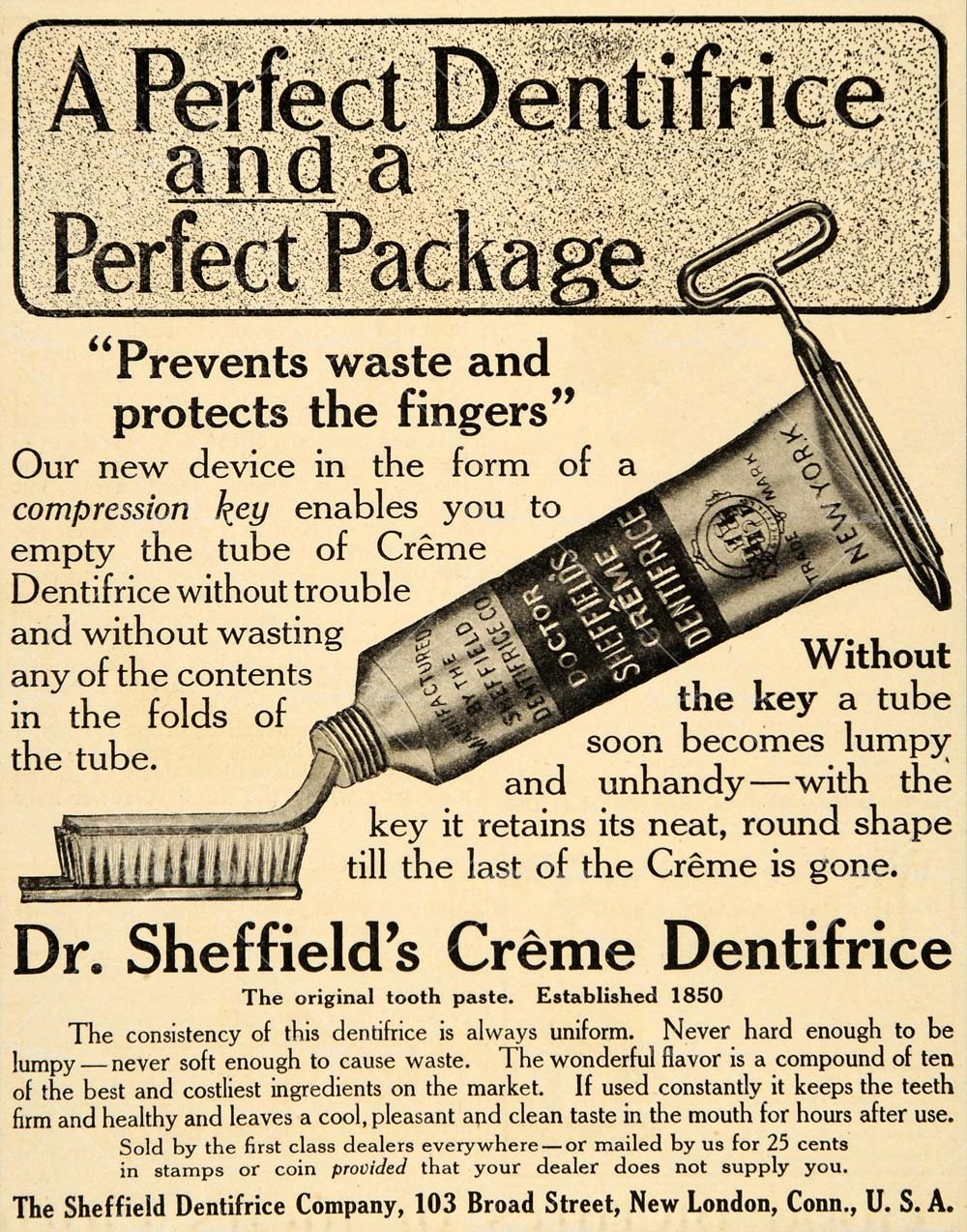Dingue ce qu'on apprend ici : les tubes de dentifrice et autres existent depuis bien plus longtemps que ce que je pensais (en tout cas avant 1910)

http://beachpackagingdesign.com/boxvox/toothpaste-keys
A Connecticut dentist named Dr. Washington Sheffield introduced collapsible metal toothpaste tubes in 1892. Sheffield was also the likely inventor of toothpaste, although the Colgate Company makes claims to this achievement too. The dentist had begun using toothpaste in his practice in the 1850s, and started selling his Dr. Sheffield's Creme Dentifrice commercially in the 1870s after continued praise from his clients. Both his company and Colgate had been selling their toothpaste in jars, and when Colgate switched to tubes, they called their new product Colgate Ribbon Dental Creme. In Great Britain around the same time, Beecham's Toothpaste also began to be sold in collapsible tubes. Before toothpaste, people had commonly been using tooth powders for teeth cleansing.
History
Sheffield got the idea for the tube from his son, who had traveled to Paris and saw artists using oil paint from metal tubes. The first toothpaste tubes were made of tin and lead, and remained basically the same until a metal shortage during World War II. The War Production Board restricted consumer use of many types of metal, including tin, lead and aluminum, creating a potential crisis in the toothpaste tube industry. Aluminum industry leaders received approval for a salvage depot idea where consumers could buy a new tube product if they turned in some sort of used metal product. During the war, manufacturers began creating toothpaste tubes from aluminum and plastic while most of the tin and lead supply went for military usage.
Considerations
Manufacturers were making tubes made completely of plastic by the 1950s for suntan lotion, but this type of polyethylene tube did not work for toothpaste, as it was too porous and reacted with toothpaste ingredients. Eventually all-plastic toothpaste tubes were introduced in the 1990s and rapidly replaced the plastic-aluminum combination.
Benefits
Plastic tubes have one distinct functional advantage over metal tubes--metal tubes are much more likely than plastic ones to tear or get a hole in them when rolled up. The toothpaste comes out of the perforations, which is a messy business. The paste also can then become dry from air getting into the tube.
Considerations
Metal tubes do have some advantages over plastic tubes. They stay coiled up from the bottom better, and because of this, they are less likely to draw air back inside because the paste stays put at the top opening. Metal tubes are still commonly used for oil paint and certain gels containing pharmaceutical products and supplements, to keep air from getting in at the top. Air can dry out the product, or it can cause oxidation that may result in some degradation.
Read more : http://www.ehow.com/about_4597108_toothpaste-tubes-made-metal.html
pub datée de 1889


